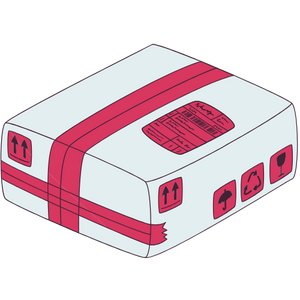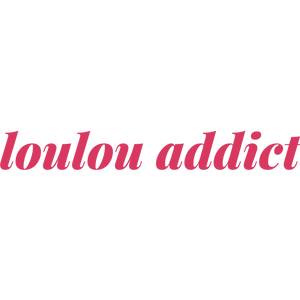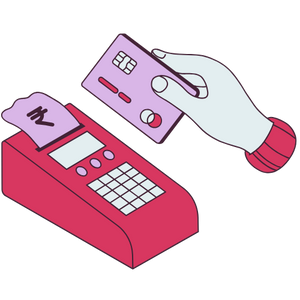Acne and periods: adult hormonal acne
If as a teenager, acne can be severe and flare up because of the flood of hormones from puberty, what about hormonal acne in adulthood?
What’s the link between periods and acne? What about the connection between birth control and acne? What are the tips and habits you should follow to avoid those pesky pimples that can make daily life miserable?
In this article:
What is acne?
Acne is a skin disease that affects a huge number of people, sometimes more or less severely, on the face but also the back, shoulders, and chest.
This chronic disease, which is very difficult to control and resolve, is caused by a hormonal imbalance. The glands that secrete the famous sebum then malfunction. Excess sebum leads to the formation of open comedones and closed comedones (blackheads and whiteheads).
Red pimples (papules, pustules, or nodules) are an inflammatory reaction to the proliferation of bacteria.
Why do we get acne as adults?
Not everyone is the same. It's a matter of genetics, skin, diet, environment, and stress. In short, as you can see, not everyone starts out on equal footing when it comes to acne.
Other factors can increase the chances of having more or less severe acne as an adult:
- Genetics. If one of your parents has oily skin, you’re more likely to have oily skin too, which creates the perfect environment for blackheads and those lovely red or white pimples.
Excess sebum production clogs your pores, preventing your skin from breathing, and impurities settle in. That’s when breakouts start.
- Your diet can partly affect your skin (too oily, too sugary).
- Your makeup (if it’s low quality or applied too heavily), poor makeup removal, and even your makeup brushes can harbor lots of bacteria.
- Your pillowcase should be changed regularly to limit contact with fabric saturated with impurities, dead skin, and hair.
- But you should also consider stress, pollution, or smoking.

And what about hormonal acne?
Many external factors can worsen acne, but today we want to focus specifically on hormonal acne.
Hormonal acne, as the name suggests, is directly related to hormones. If you’ve read our recent articles, especially on the menstrual cycle, you know that a woman’s body is affected every month by many different hormones. These hormones directly impact the female cycle, periods, and ovulation.
So, we know that at puberty, when girls get their first periods, hormones go wild, so it’s not surprising (though annoying) to see some acne in teen girls and young women.
But why do adult women still get hormonal acne? Simply because their skin is especially sensitive to hormonal changes that happen with each cycle.
The menstrual cycle is driven by the production, rise, and fall of certain hormones. These changes during the different phases of the cycle affect the skin.
Let’s recap:
- Female hormones like estrogen and progesterone,
- the male hormone, testosterone;
- or the stress hormone, cortisol.
The fluctuation of these hormones affects the sebaceous glands. These produce sebum. When sebum production is disrupted, pimples can form.
How do you recognize hormonal acne?
Hormonal acne isn’t that different from acne you might have had as a teen. It usually includes:
- the infamous blackheads,
- the rarer whiteheads,
- the red bumps with a white tip on the skin’s surface,
- red bumps under the skin.
Hormonal acne—that is, acne in adult women of childbearing age—mainly appears in the lower part of the face. It’s found on the chin, around the mouth, lower cheeks, and along the jawline.
Hormonal acne tends to come back in cycles and is also influenced by major life events for women, such as childbirth, abortion, or menopause.
During the postpartum period, when your hormones are completely out of whack, it’s not surprising to see more acne than usual.
Acne and periods: premenstrual acne
The numbers and studies are clear. Many women notice a worsening of their acne before their period. Just a reminder: the time leading up to your period is called the luteal phase.
It’s during this phase that a woman may experience PMS or Premenstrual Syndrome. Symptoms vary greatly from woman to woman and from cycle to cycle, and can be both psychological (anxiety, irritability) and physical (headaches, fatigue).
During the luteal phase, female hormones are at their lowest while testosterone, the male hormone, rises. In short, more fluctuations that, about a week before your next period, can cause new breakouts to appear.
Is the pill a solution for hormonal acne?
In our article, Periods and Birth Control: the impact on your menstrual flow, we discussed the different contraceptive options, especially the case of the pill. Just a reminder: there are two types of hormonal birth control pills:
- the combined pill or low-dose pill based on two hormones: estrogen and progesterone,
- the progestin-only pill or low-dose pill based on a synthetic progestogen.
If you want to reduce your acne, the combined pill can be a solution. However, be aware that a pill can’t be prescribed just to reduce acne.
It’s important that this is a well-considered decision, discussed with both your doctor and gynecologist. Third- and fourth-generation birth control pills carry a certain risk of causing thrombolic diseases. So, you really need to get informed before choosing this option.
 Don’t forget to pin this article 😉
Don’t forget to pin this article 😉


































